
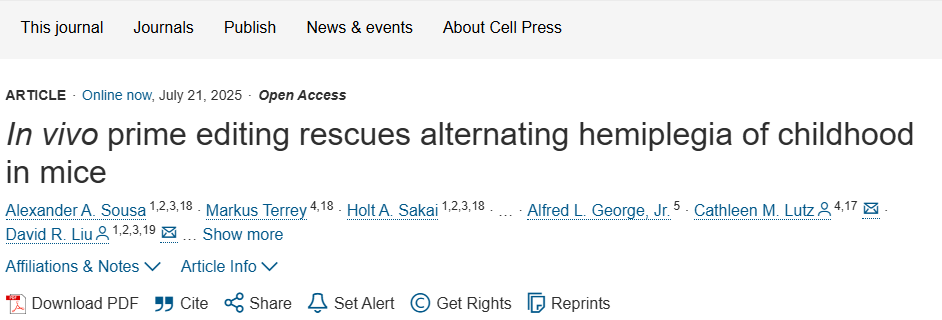
In vivo prime editing rescues alternating hemiplegia of childhood in mice
Alternating hemiplegia of childhood (AHC) is a neurodevelopmental disorder with no disease-modifying treatment. Mutations in ATP1A3, encoding an Na/K ATPase subunit, cause 70% of AHC cases.
04
2025-08
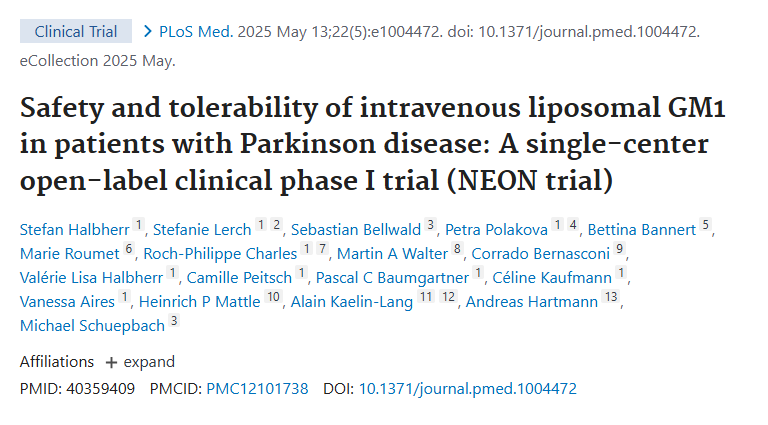
Safety and tolerability of intravenous liposomal GM1 in patients with Parkinson disease: A single-center open-label clinical phase I trial (NEON trial)
Parkinson disease (PD) is a chronic progressive neurodegenerative disorder leading to motor and non-motor impairment, often resulting in severe loss of quality of life. There are symptomatic treatments without effect on the progression of PD. A disease-modifying treatment that could ideally stop the neurodegenerative process is direly needed.
24
2025-07
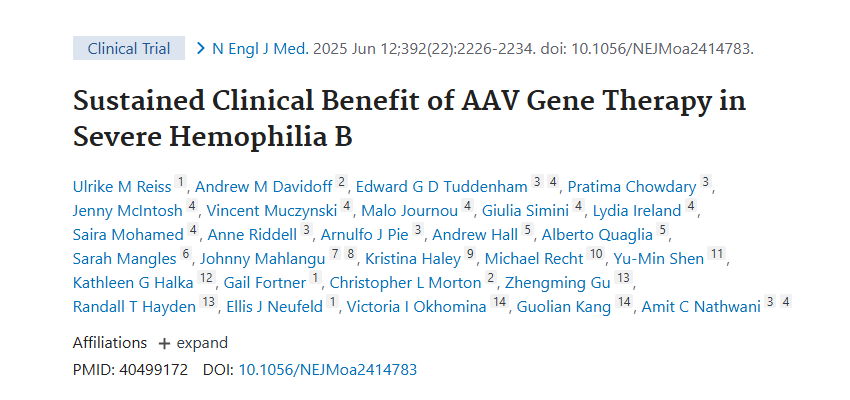
Sustained Clinical Benefit of AAV Gene Therapy in Severe Hemophilia B
Background: Adeno-associated virus (AAV)-mediated gene therapy has emerged as a promising treatment for hemophilia B. Data on safety and durability from 13 years of follow-up in a cohort of patients who had been successfully treated with scAAV2/8-LP1-hFIXco gene therapy are now available.
25
2025-06
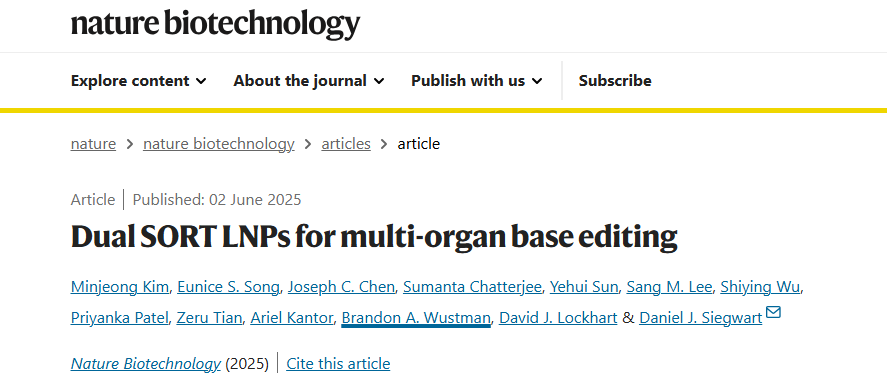
Dual SORT LNPs for multi-organ base editing
Alpha-1 antitrypsin (A1AT) deficiency (AATD) is caused by a mutation in the SERPINA1 gene (PiZ allele), where misfolded A1AT liver accumulation leads to liver damage, and A1AT deficiency in the lungs results in emphysema due to unregulated neutrophil elastase activity.
Abstract
Alpha-1 antitrypsin (A1AT) deficiency (AATD) is caused by a mutation in the SERPINA1 ge
05
2025-06
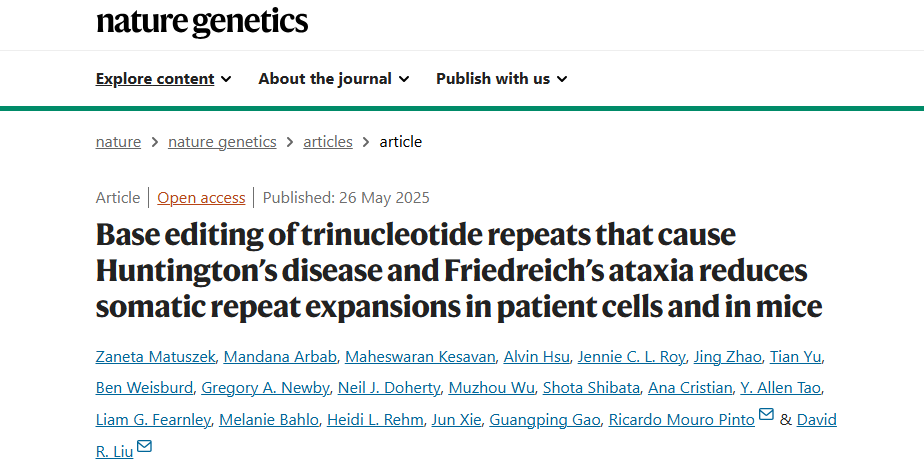
Base editing of trinucleotide repeats that cause Huntington’s disease and Friedreich’s ataxia reduces somatic repeat expansions in patient cells and in mice
Trinucleotide repeat (TNR) diseases are neurological disorders caused by expanded genomic TNRs that become unstable in a length-dependent manner. The CAG•CTG sequence is found in approximately one-third of pathogenic TNR loci, including the HTT gene that causes Huntington’s disease.
Abstract
Trinucleotide repeat (TNR) diseases are neurological disorders caused by expanded genom
30
2025-05
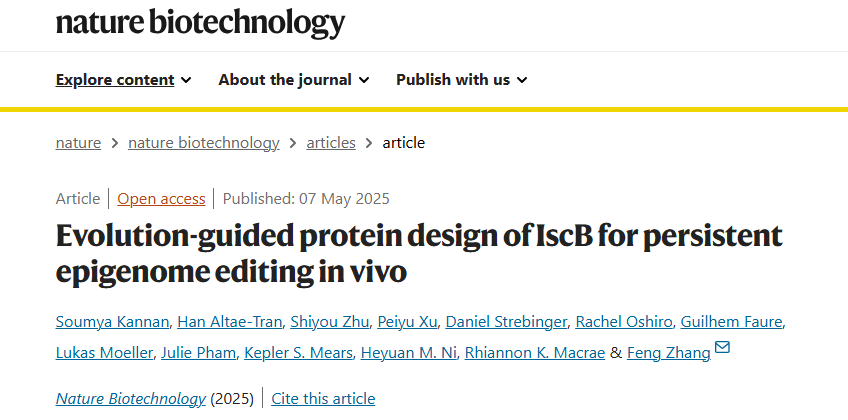
Evolution-guided protein design of IscB for persistent epigenome editing in vivo
Naturally existing enzymes have been adapted for a variety of molecular technologies, with enhancements or modifications to the enzymes introduced to improve the desired function; however, it is difficult to engineer variants with enhanced activity while maintaining specificity.
07
2025-05

Gene therapy then and now: A look back at changes in the field over the past 25 years
In this review, we aim to capture the transformative changes in the field by surveying the literature over this period, with a particular focus on advancements in gene delivery vector technology, disease and tissue targeting, and the revolutionary molecular tools that have become central to the field. We also discuss the current challenges facing gene therapy and the need for greater collaboration to ensure its accessibility worldwide.
07
2025-05
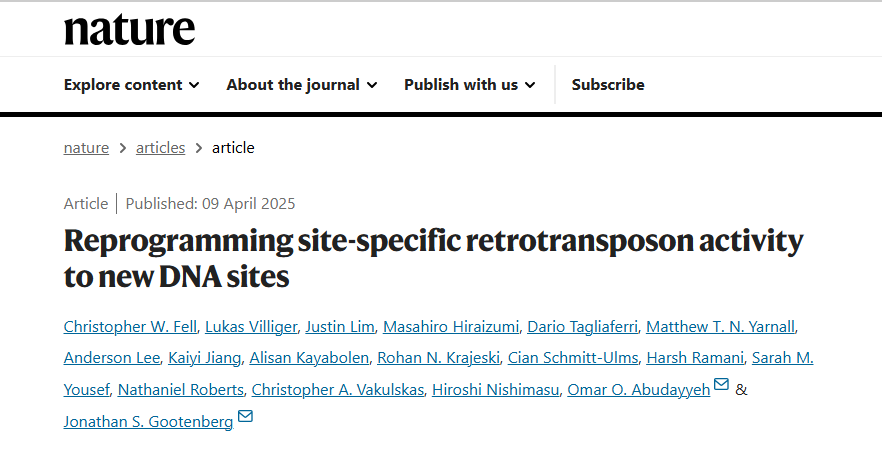
Reprogramming site-specific retrotransposon activity to new DNA sites
Retroelements have a critical role in shaping eukaryotic genomes. For instance, site-specific non-long terminal repeat retrotransposons have spread widely through preferential integration into repetitive genomic sequences, such as microsatellite regions and ribosomal DNA genes.
09
2025-04
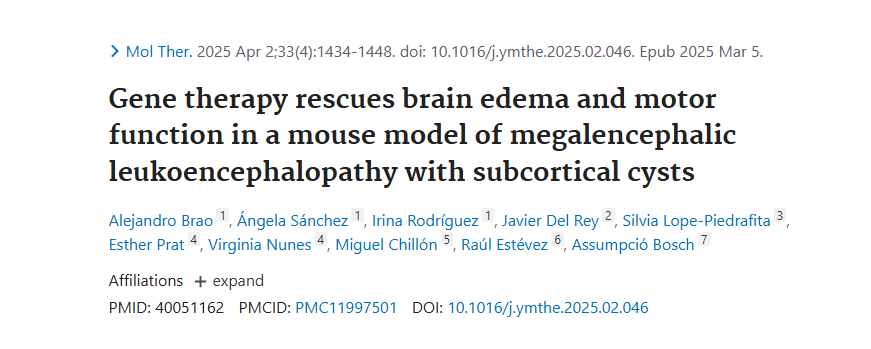
Gene therapy rescues brain edema and motor function in a mouse model of megalencephalic leukoencephalopathy with subcortical cysts
Megalencephalic leukoencephalopathy with subcortical cysts (MLC) is an ultrarare, infantile-onset leukodystrophy characterized by white matter edema for which there is no treatment. More than 75% of diagnosed cases result from biallelic loss-of-function mutations in the astrocyte-specific gene MLC1, leading to early-onset macrocephaly, cerebellar ataxia, epilepsy, and mild cognitive decline.
Abstract
Megalencephalic leukoencephalopathy with subcortical cysts (MLC) is an ultrarare, infa
02
2025-04

OTOF-Related Gene Therapy: A New Way but a Long Road Ahead
Gene therapy for hearing disorders is a promising advancement in the treatment of genetic hearing loss, particularly OTOF-related deafness. Mutations in OTOF disrupt synaptic transmission in cochlear inner hair cells, leading to profound congenital deafness and being a major cause of autosomal recessive non-syndromic auditory neuropathy (DFNB9).
Gene therapy for hearing disorders is a promising advancement in the treatment of genetic hearing
07
2025-03

Improved split prime editors enable efficient in vivo genome editing
Efficient prime editor (PE) delivery in vivo is critical for realizing its full potential in disease modeling and therapeutic correction. Although PE has been divided into two halves and delivered using dual adeno-associated viruses (AAVs), the editing efficiency at different gene loci varies among split sites. Furthermore, efficient split sites within Cas9 nickase (Cas9n) are limited.
27
2025-01
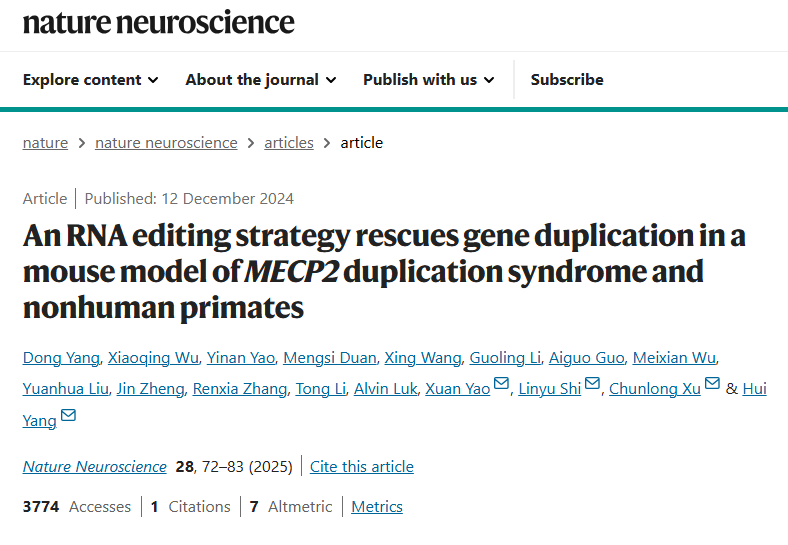
An RNA editing strategy rescues gene duplication in a mouse model of MECP2 duplication syndrome and nonhuman primates
Duplication of methyl-CpG-binding protein 2 (MECP2) gene causes MECP2 duplication syndrome (MDS). To normalize the duplicated MECP2 in MDS, we developed a high-fidelity Cas13Y (hfCas13Y) system capable of targeting the MECP2 (hfCas13Y-gMECP2) messenger RNA for degradation and reducing protein levels in the brain of humanized MECP2 transgenic mice.
13
2024-12
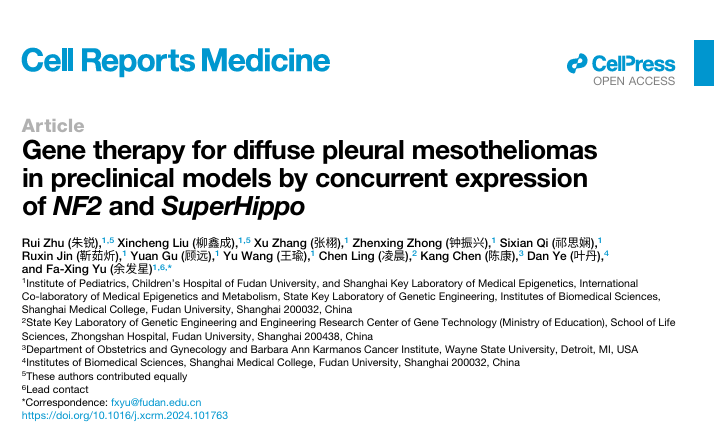
Gene therapy for diffuse pleural mesotheliomas in preclinical models by concurrent expression of NF2 and SuperHippo
Diffuse pleural mesothelioma (DPM) is a lethal cancer with a poor prognosis and limited treatment options. The Hippo signaling pathway genes, such as NF2 and LATS1/2, are frequently mutated in DPM, indicating a tumor suppressor role in the development of DPM.
08
2024-10
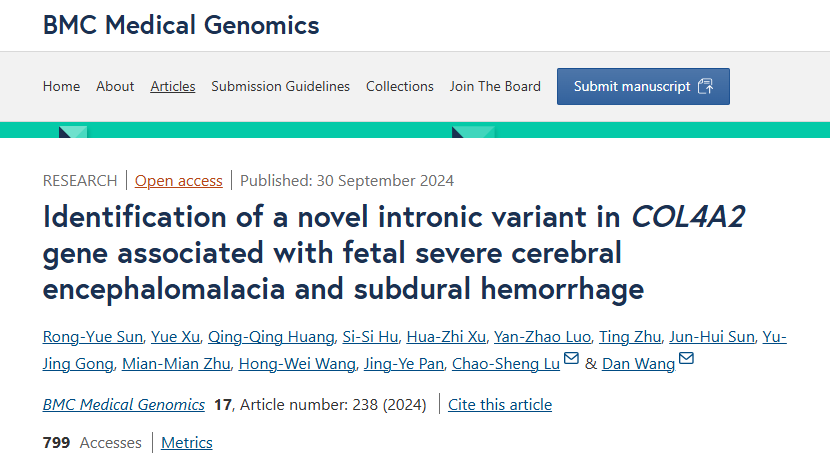
Identification of a novel intronic variant in COL4A2 gene associated with fetal severe cerebral encephalomalacia and subdural hemorrhage
Genetic variants in COL4A2 are less common than those of COL4A1 and their fetal clinical phenotype has not been well described to date. We present a fetus from China with an intronic variant in COL4A2 associated with a prenatal diagnosis of severe cerebral encephalomalacia and subdural hemorrhage.
30
2024-09
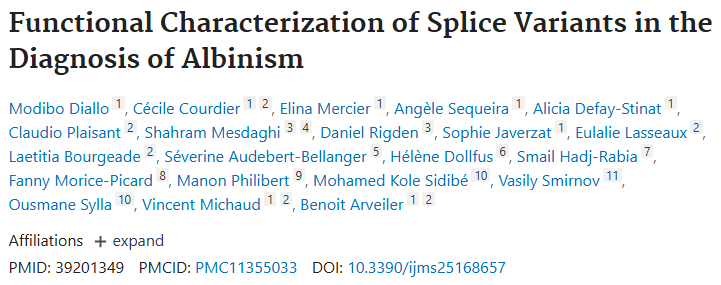
Functional Characterization of Splice Variants in the Diagnosis of Albinism
Albinism is a genetically heterogeneous disease in which 21 genes are known so far. Its inheritance mode is autosomal recessive except for one X-linked form. The molecular analysis of exonic sequences of these genes allows for about a 70% diagnostic rate.
25
2024-08
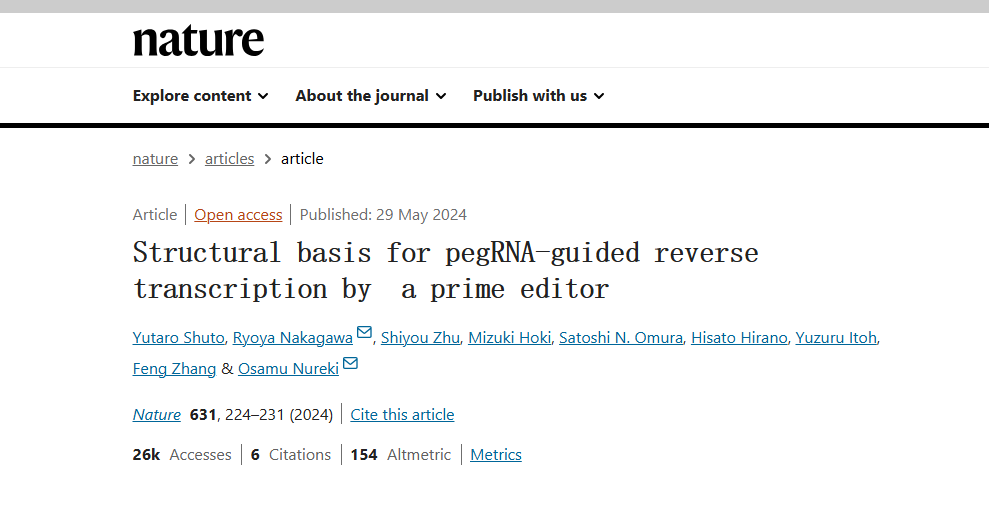
Structural basis for pegRNA-guided reverse transcription by a prime editor
The prime editor system composed of Streptococcus pyogenes Cas9 nickase (nSpCas9) and engineered Moloney murine leukaemia virus reverse transcriptase (M-MLV RT) collaborates with a prime editing guide RNA (pegRNA) to facilitate a wide variety of precise genome edits in living cells.
Abstract
Albinism is a genetically heterogeneous disease in which 21 genes are known so far. Its
05
2024-06
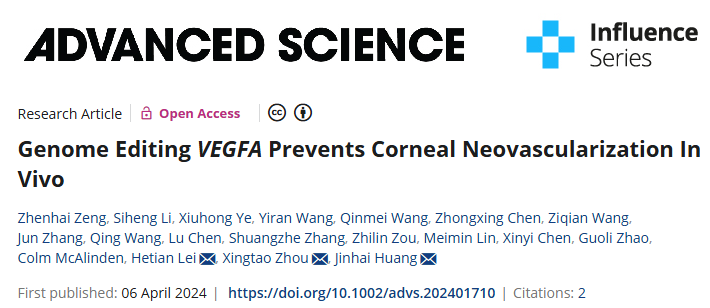
Genome Editing VEGFA Prevents Corneal Neovascularization In Vivo
Corneal neovascularization (CNV) is a common clinical finding seen in a range of eye diseases. Current therapeutic approaches to treat corneal angiogenesis, in which vascular endothelial growth factor (VEGF) A plays a central role, can cause a variety of adverse side effects. The technology of Clustered Regularly Interspaced Short Palindromic Repeats (CRISPR)/Cas9 can edit VEGFA gene to suppress its expression. CRISPR offers a novel opportunity to treat CNV.
16
2024-04
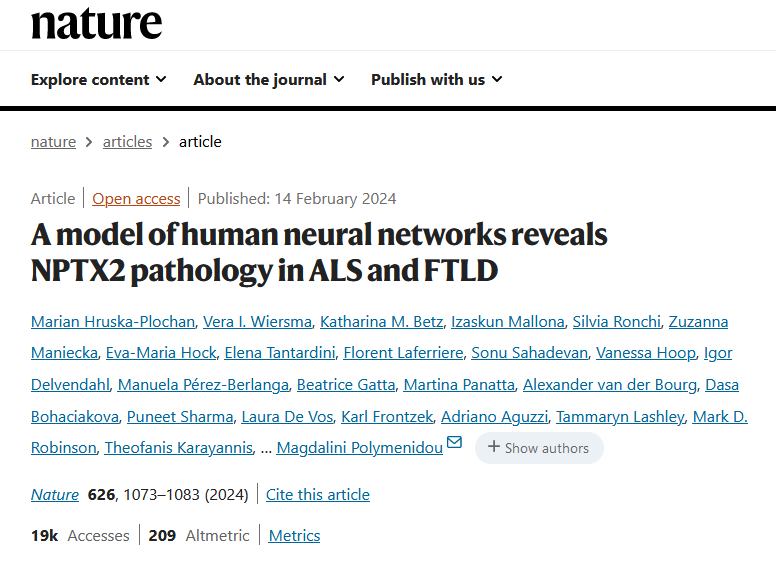
A model of human neural networks reveals NPTX2 pathology in ALS and FTLD
Human cellular models of neurodegeneration require reproducibility and longevity, which is
21
2024-03
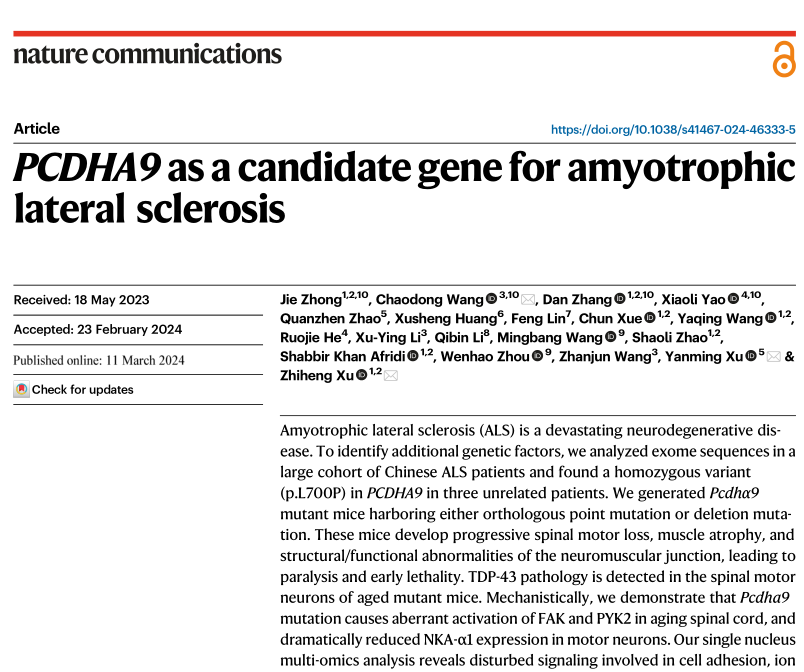
PCDHA9 as a candidate gene for amyotrophic lateral sclerosis
There has been new progress in the research of Amyotrophic Lateral Sclerosis (ALS), with the discovery of a novel pathogenic gene—PCDHA9. Mouse animal models have confirmed that mutations at this pathogenic site can lead to a typical ALS phenotype, and an in-depth analysis of the pathogenic mechanism has been conducted.
15
2024-03
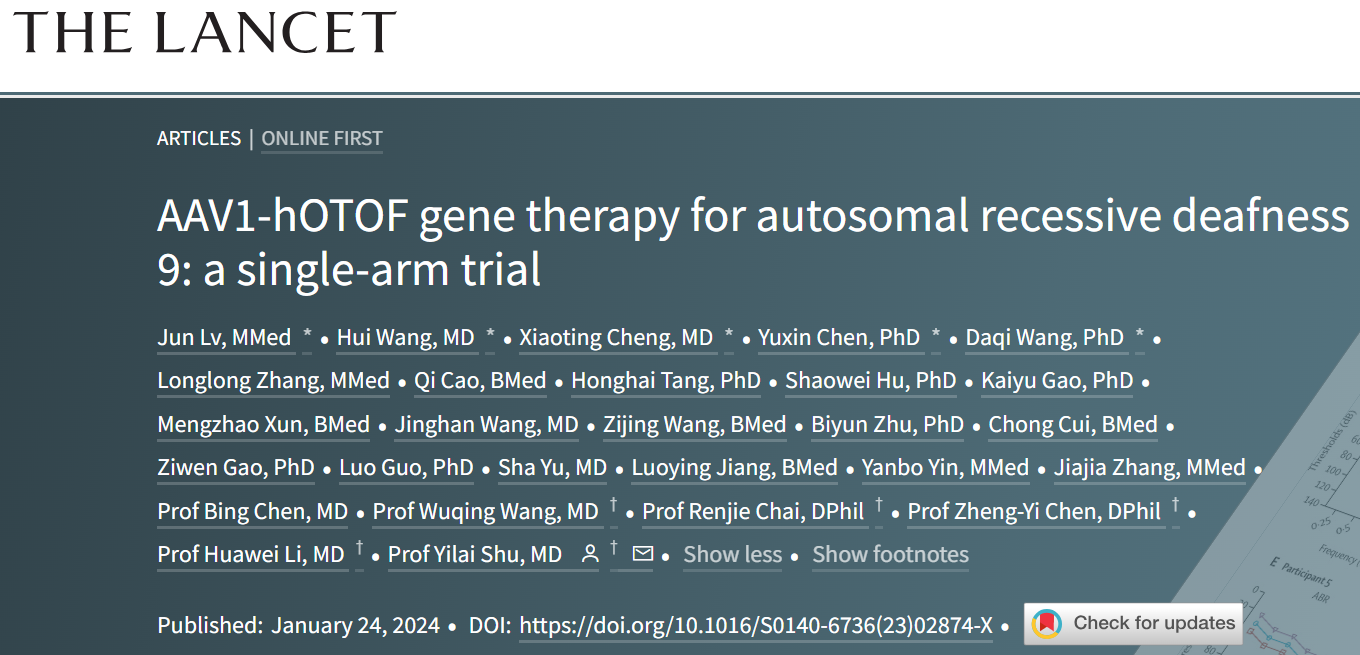
Lancet | Fudan University Team: The World's First Clinical Trial with Dual AAV Vectors
Today (January 25th), the Eye, Ear, Nose, and Throat Hospital affiliated with Fudan University took
25
2024-01
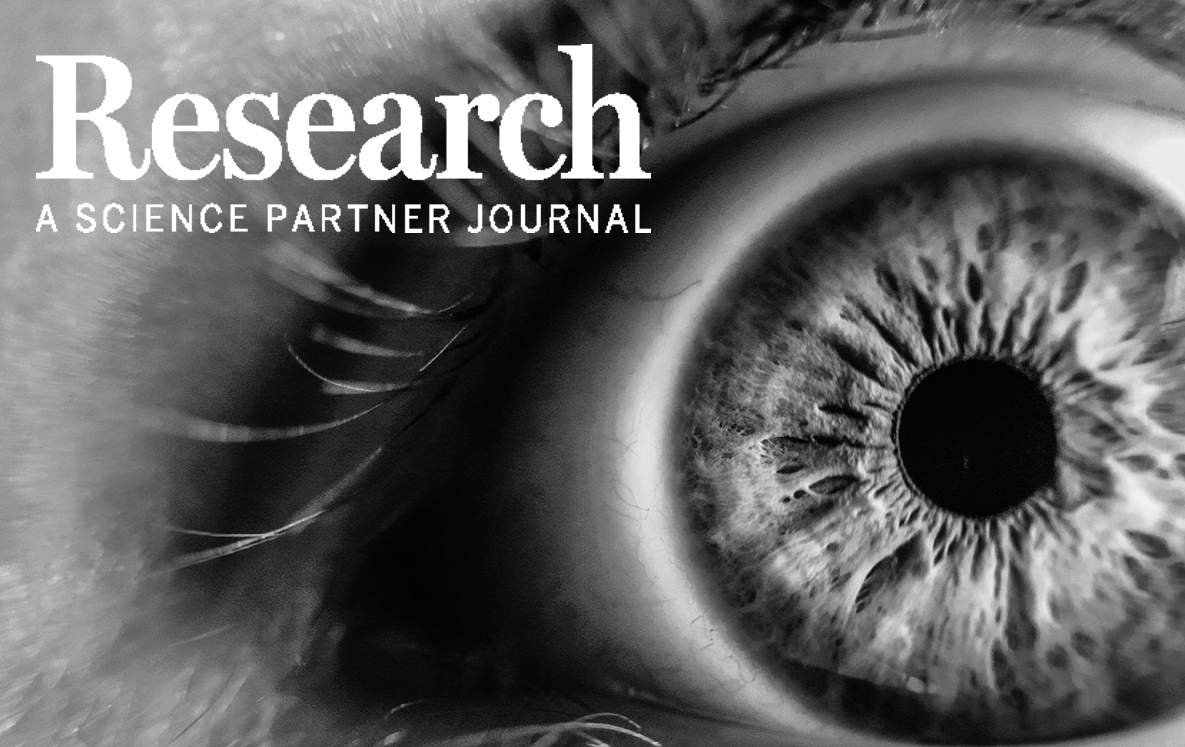
Research | Academician Xianqun Fan's Team at Shanghai Jiao Tong University: Progress and Prospects of AAV in Gene Therapy Applications for Eye Diseases
Recently, the team led by Academician Fan Xianqun from Shanghai Jiao Tong University published a r
25
2024-01
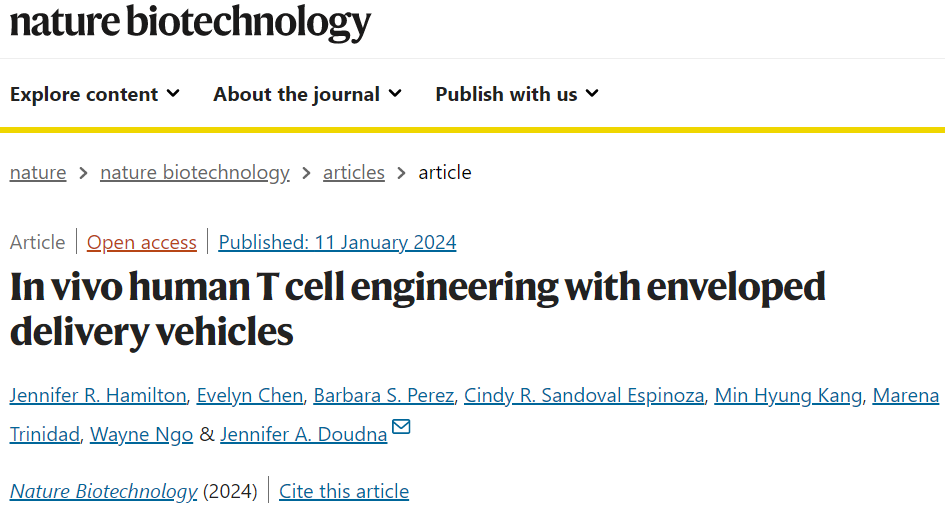
Nature Biotechnology: Another masterpiece from a Nobel laureate! Doudna's team develops a new method to deliver genome editing tools to specific cells.
ViruseOn January 14, 2024, the team led by Jennifer A. Doudna at the University of California, Berkeley, published a research paper titled "In vivo human T cell engineering with enveloped delivery vehicles" in Nature Biotechnology online.
16
2024-01
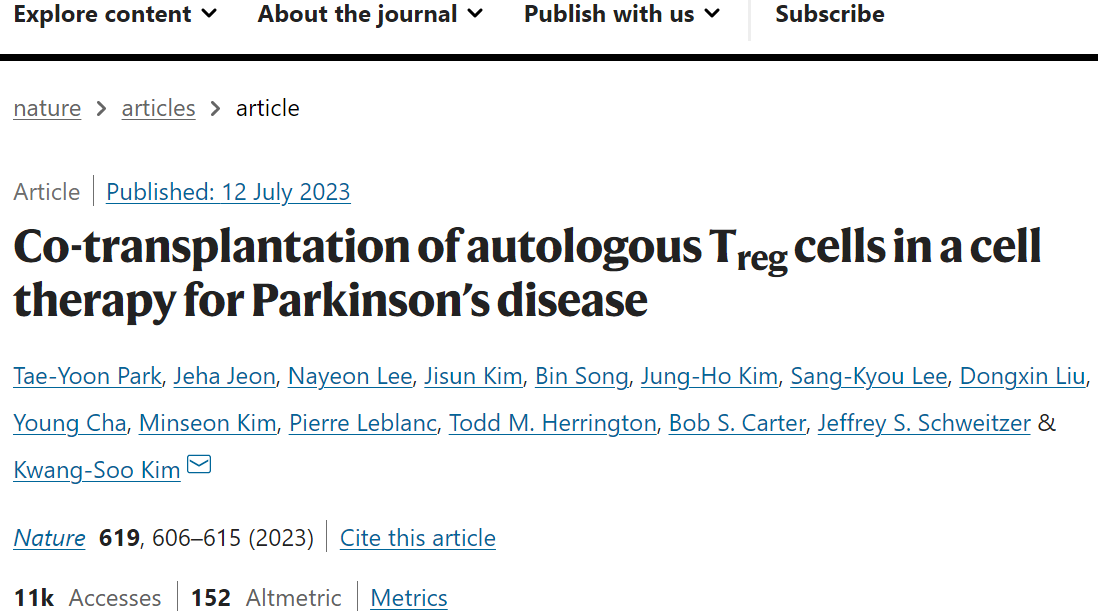
Co-transplantation of autologous Treg cells in a cell therapy for Parkinson's disease
Together, these data emphasize the importance of the initial inflammatory response to surgical injury in the differential survival of cellular components of the graft, and suggest that co-transplanting autologous Treg cells effectively reduces the needle-trauma-induced death of mDANs, providing a potential strategy to achieve better clinical outcomes for cell therapy in Parkinson's disease.
28
2023-08
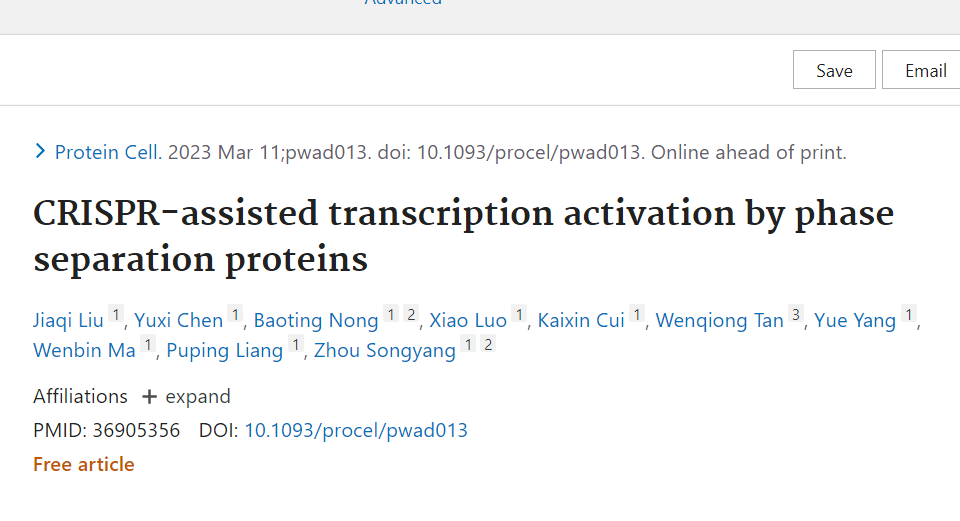
CRISPR-assisted transcription activation by phase separation proteins
These findings demonstrate the feasibility of using phase-separation proteins to assist in the regulation of gene expression and support the broad appeal of the dCas9-VPRF system in basic and clinical applications.
28
2023-08
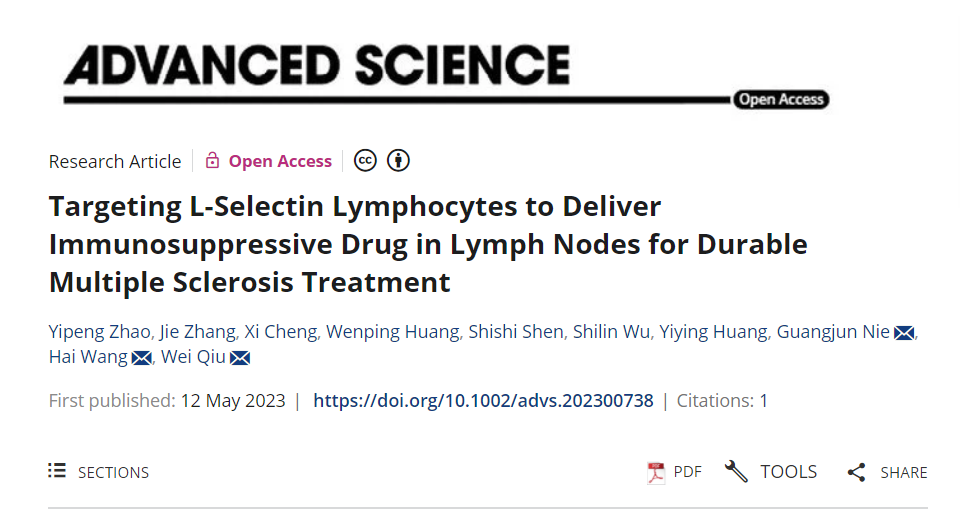
Targeting L-selectin Lymphocytes to Deliver Immunosuppressive Drug in Lymph Nodes for Durable Multiple Sclerosis Treatment
Abstract
Inflammation induced by autoreactive CD4+ T lymphocytes is a major factor in the path
28
2023-08
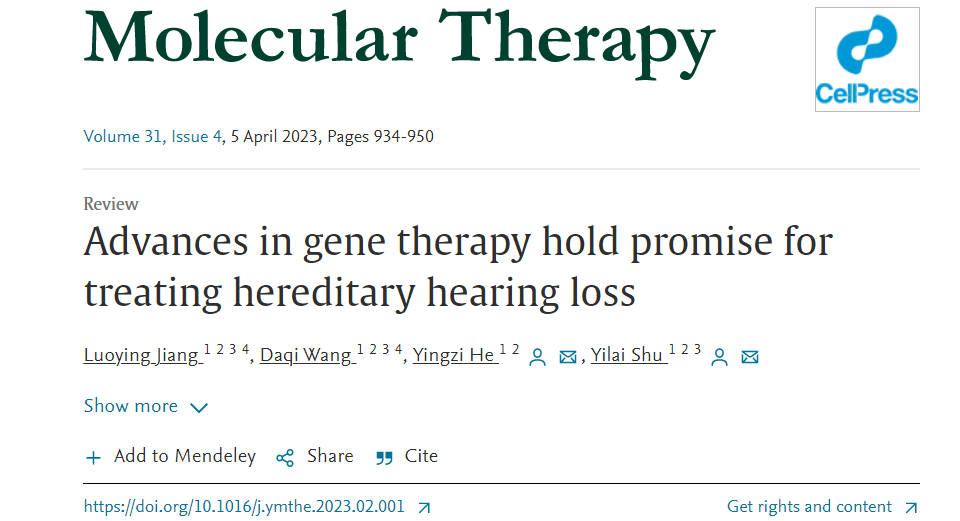
Advances in gene therapy hold promise for treating hereditary hearing loss
Herein, we address three main gene therapy strategies (gene replacement, gene suppression, and gene editing), summarizing the strategy that is most appropriate for particular monogenic diseases based on different pathogenic mechanisms, and then focusing on their successful applications for HHL in preclinical trials. Finally, we elaborate on the challenges and outlooks of gene therapy for HHL
28
2023-08
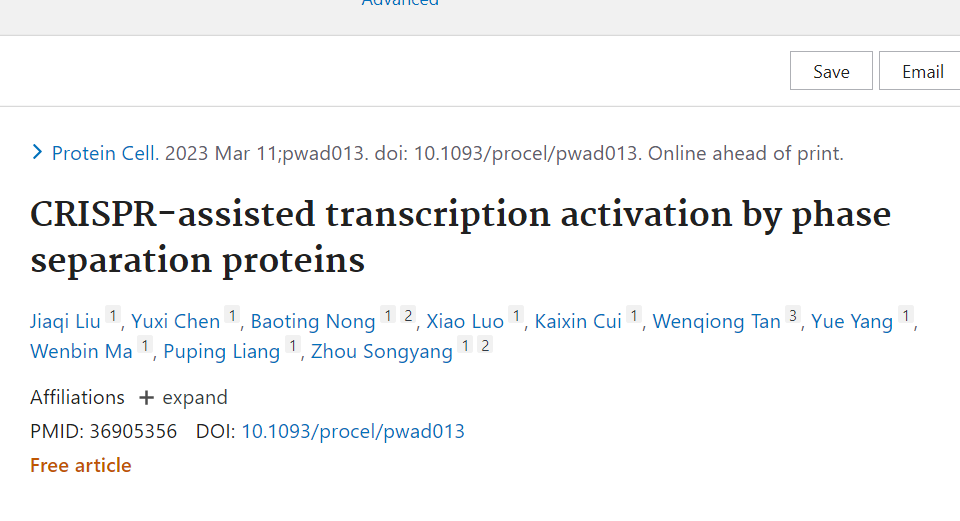
CRISPR-assisted transcription activation by phase-separation proteins
These findings demonstrate the feasibility of using phase-separation proteins to assist in the regulation of gene expression and support the broad appeal of the dCas9-VPRF system in basic and clinical applications.
10
2023-08
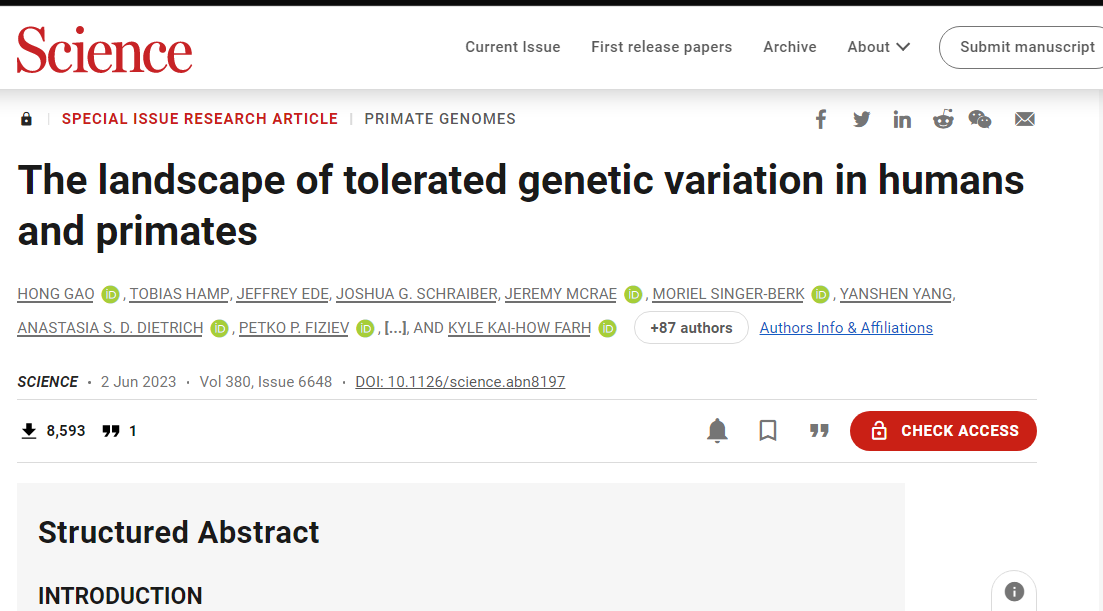
The landscape of tolerated genetic variation in humans and primates
We show that these variants can be inferred to have nondeleterious effects in humans based on their presence at high allele frequencies in other primate populations. We use this resource to classify 6% of all possible human protein-altering variants as likely benign and impute the pathogenicity of the remaining 94% of variants with deep learning, achieving state-of-the-art accuracy for diagnosing pathogenic variants in patients with genetic diseases.
10
2023-08

Nature: AI constructs gene interaction networks to accelerate discovery of disease treatment targets
This study generated a gene expression dataset - Genecorpus-30M, which includes about 30 million single cell transcriptomic data from various human tissues. The research team pre-trained an AI model based on transfer learning - Geneformer, using this dataset to enable prediction of gene network dynamics, mapping of gene networks, and accelerated discovery of disease treatment candidate targets in limited data.
10
2023-08